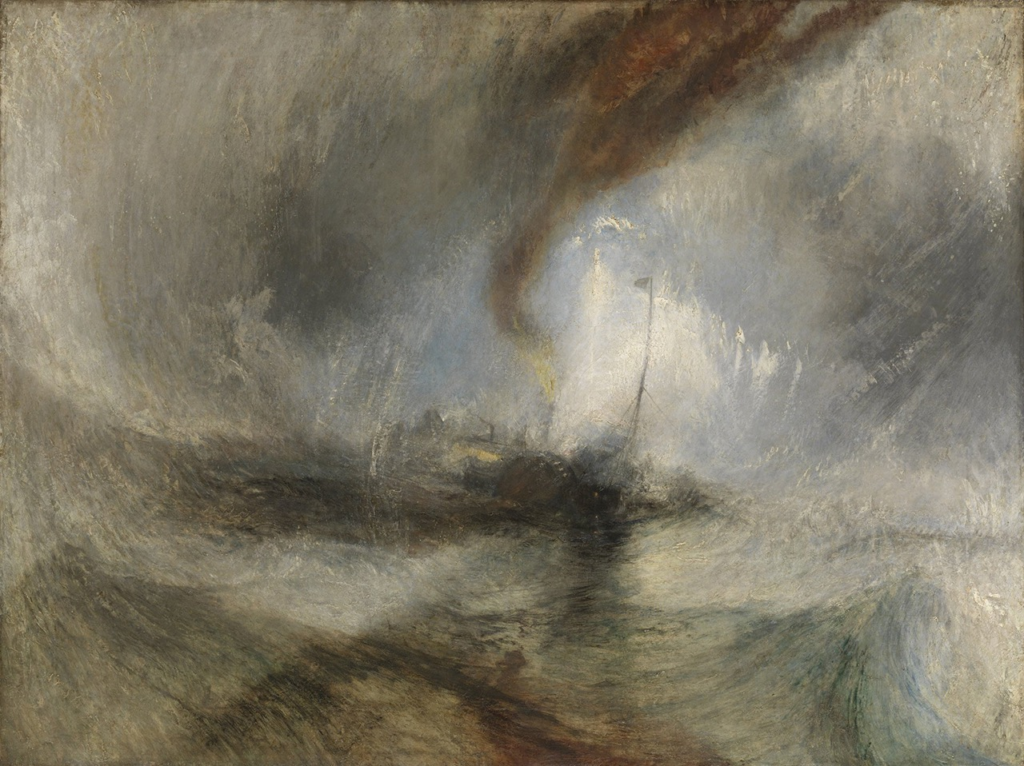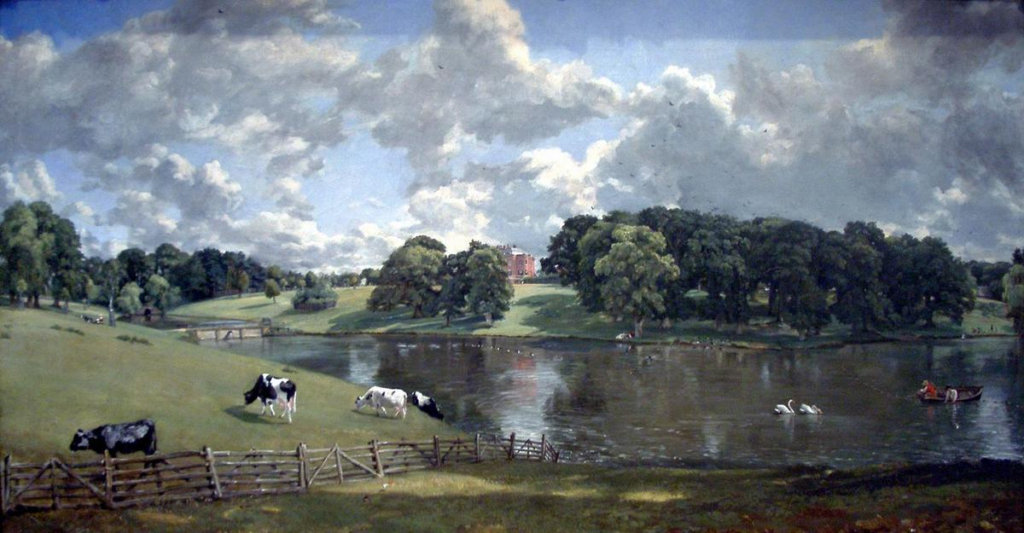What is romanticism?
Romanticism is an artistic movement that emerged in the late 18th century and flourished throughout the 19th century. It was a reaction against the rationalism and order of the Enlightenment and the industrialization of society, emphasizing emotion, imagination, and nature as the true sources of beauty and truth.

Key Characteristics of Romanticism:
- Emotion Over Reason – Feelings, passion, and intuition were valued more than logic and rational thought.
- Imagination & Creativity – Romantic artists and writers sought to explore new, fantastical ideas rather than adhere to traditional structures.
- Nature & The Sublime – The natural world was seen as a place of spiritual renewal, beauty, and power, often depicted as wild, untamed, and awe-inspiring.
- Individualism & Rebellion – Romanticism celebrated the unique individual, particularly those who defied societal expectations and pursued their own path.
- Mysticism & The Supernatural – Interest in folklore, the occult, and the unknown played a significant role in Romantic literature and art.
- Melancholy & Nostalgia – A longing for the past, lost love, or unfulfilled dreams was a recurring theme in Romantic works.
- Idealism & Transcendence – Many Romantic thinkers believed in the pursuit of higher truths, often through artistic expression, dreams, or personal introspection.
What was Romanticism a reaction against?
The Enlightenment (18th Century Rationalism)
- The Enlightenment emphasized reason, logic, science, and order, promoting structured thought and empirical evidence.
- Romanticism rejected this, believing that emotion, imagination, and intuition were just as important as reason.
- While the Enlightenment valued universal truths, Romanticism focused on individual experience and personal truths.
2. The Industrial Revolution (18th–19th Century)
- The rise of industrialization and urbanization led to crowded cities, pollution, and a shift away from rural life.
- Romanticism responded with a nostalgia for nature, portraying it as pure, spiritual, and untainted by human corruption.
- Many Romantic thinkers opposed the dehumanization of workers in factories and celebrated the individual over machines.
3. Neoclassicism & Structured Art
- Neoclassicism, which dominated the 18th century, emphasized order, harmony, and rationality in art and literature.
- Romanticism rejected strict forms and celebrated experimentation, spontaneity, and emotional expression.
4. Political & Social Order (Revolutions & Rebellion)
- Romanticism was influenced by the French Revolution (1789), which symbolized the power of individual freedom and rebellion.
- Many Romantics championed the rights of the individual and celebrated outcasts, revolutionaries, and misunderstood heroes.
- Figures like the Byronic Hero (dark, rebellious, passionate characters) emerged as symbols of Romantic defiance.
5. Scientific Rationalism & Materialism
- The scientific advancements of the 18th and 19th centuries prioritized materialism and mechanistic worldviews.
- Romantics, however, explored spirituality, mysticism, and the supernatural, believing in forces beyond human understanding.
Enlightenment
The Enlightenment (1685–1815)
The Enlightenment was an intellectual and cultural movement that emphasized reason, logic, science, and individual rights over tradition, superstition, and religious dogma. It emerged in the late 17th century and peaked in the 18th century, influencing politics, philosophy, science, and society.
Key Ideas of the Enlightenment:
- Reason Over Tradition: Knowledge should be based on rational thought and empirical evidence, not religious faith or inherited beliefs.
- Scientific Progress: The Scientific Revolution fueled belief in human ability to understand and control the natural world through observation and experimentation.
- Skepticism of Authority: Many Enlightenment thinkers questioned monarchy, aristocracy, and the Church, advocating for political reform.
- Individual Rights & Freedom: Thinkers like John Locke and Jean-Jacques Rousseau argued for natural rights, democracy, and self-government.
- Separation of Church and State: Many Enlightenment thinkers promoted religious tolerance and secular governance.
- Optimism & Progress: There was a strong belief that humanity could improve through education, science, and reason.
Key Figures of the Enlightenment:
- John Locke – Advocated for natural rights (life, liberty, property) and government by consent.
- Voltaire – Criticized religious intolerance and promoted freedom of speech.
- Jean-Jacques Rousseau – Explored democracy and the idea of the “general will.”
- Montesquieu – Proposed separation of powers in government.
- Immanuel Kant – Defined the Enlightenment as “daring to know” (Sapere aude), encouraging intellectual independence.
Impact of the Enlightenment:
- Influenced Revolutions – Inspired the American Revolution (1776) and French Revolution (1789) by promoting democracy and human rights.
- Shaped Modern Democracy – Ideas about constitutional government, checks and balances, and civil liberties remain influential today.
- Advanced Science & Secularism – Led to the decline of religious influence in politics and an increase in scientific thinking.
The Sublime
The sublime is a concept in art, literature, and philosophy that refers to experiences that evoke awe, terror, or overwhelming beauty, often associated with nature’s power and human insignificance. It was a key idea in Romanticism, emphasizing emotions beyond ordinary perception—something vast, infinite, or beyond human control.

Edmund Burke on the Sublime
Edmund Burke, in his 1757 work A Philosophical Enquiry into the Origin of Our Ideas of the Sublime and Beautiful, defined the sublime as something that provokes “the strongest emotion which the mind is capable of feeling.” He argued that the sublime is linked to feelings of terror and awe, especially when encountering vast, powerful, or obscure things.
Quote from Burke:
“Whatever is fitted in any sort to excite the ideas of pain and danger, that is to say, whatever is in any sort terrible, or is conversant about terrible objects, or operates in a manner analogous to terror, is a source of the sublime.”
Key Aspects of the Sublime:
- Terror & Awe – The feeling of being overwhelmed by something vast or powerful (e.g., storms, mountains, or the night sky).
- Nature’s Power – The sublime is often found in untamed landscapes like waterfalls, thunderstorms, and vast oceans.
- Obscurity & Mystery – The unknown or the infinite can evoke a sense of the sublime, such as deep space or dark forests.
- Contrast with Beauty – Unlike beauty, which is harmonious and pleasing, the sublime is intense, sometimes even terrifying.
Impact of the Industrial Revolution on Romanticism
The Industrial Revolution (late 18th – 19th century) dramatically transformed society through urbanization, mechanization, and technological advancements. While it brought progress, it also led to pollution, harsh working conditions, and a loss of connection to nature. Romanticism emerged as a reaction to these changes, emphasizing emotion, nature, and individualism in opposition to industrialization’s focus on rationalism, efficiency, and mass production.
Romantic Artists
John Constable (1776–1837) – The Beauty of Rural England
- Style: Naturalistic landscapes, soft colour palettes, and emotional connection to the countryside.
- Themes: Romanticized rural life, nostalgia for pre-industrial England, and a deep appreciation for nature.
- Famous Works:
- The Hay Wain (1821) – A peaceful, idyllic scene of a rural wagon crossing a river, representing a simpler life untouched by industrialization.
- Wivenhoe Park (1816) – A lush, serene depiction of an English estate, emphasizing the harmony of nature.
How He Embodied Romanticism: Constable’s paintings reject urbanization and celebrate the emotional and spiritual power of nature, reflecting the Romantic ideal that the countryside was pure and unspoiled.

J.M.W. Turner (1775–1851) – The Power and Drama of Nature
- Style: Dramatic lighting, expressive brushwork, and intense colour contrasts.
- Themes: The sublime in nature, the overwhelming force of storms, seas, and industrialization’s impact on the world.
- Famous Works:
- The Fighting Temeraire (1839) – A nostalgic farewell to an old warship being towed by a modern steam-powered boat, symbolizing the transition from the past to the industrial age.
- Rain, Steam and Speed (1844) – A blurred, powerful depiction of a steam locomotive racing through the landscape, capturing the awe and terror of technological progress.
How He Embodied Romanticism: Turner’s work focused on the power of nature and the sublime, showing humanity’s smallness in the face of storms, fire, and the vast ocean. His later works blurred the lines between realism and impressionism, emphasizing feeling over precision.
3. Caspar David Friedrich (1774–1840) – The Mysticism of Nature
- Style: Melancholic, atmospheric landscapes with solitary figures.
- Themes: The spiritual and mystical connection between man and nature, solitude, and contemplation.
- Famous Works:
- Wanderer Above the Sea of Fog (1818) – A lone figure stands atop a misty mountain, gazing at the vast landscape, symbolizing human insignificance and self-reflection.
- The Abbey in the Oakwood (1809–1810) – Ruins of a Gothic church stand among barren trees, evoking themes of death, decay, and mystery.
How He Embodied Romanticism: Friedrich’s paintings convey the mystical and transcendent qualities of nature, aligning with Romanticism’s fascination with emotion and the unknown.
4. Francisco Goya (1746–1828) – Dark Romanticism & Human Emotion
- Style: Dramatic, often dark and nightmarish imagery with emotional intensity.
- Themes: The horrors of war, human suffering, madness, and the supernatural.
- Famous Works:
- The Third of May 1808 (1814) – A powerful depiction of Spanish civilians being executed by French soldiers, showing the brutality of war.
- Saturn Devouring His Son (1820–1823) – A disturbing, nightmarish image of the god Saturn eating his child, reflecting madness and horror.
Hay Wain by John Constable

“I shall endeavor to get a pure and unaffected manner of representing the scenes that may employ me… there is room enough for a natural painter. The great vice of the present day is bravura, an attempt to do something beyond the truth.”
John Constable
| Artist | John Constable |
| Year Painted | 1821 |
| Genre | Landscape Painting |
| Period | Romanticism |
| Medium | Oil on canvas |
| Dimensions | 51.2 x 72.8 in |
| Where it’s kept | National Gallery, London |
Notes- from video
-Landscape wasn’t a popular art style- ambitious
-Hay Wain 6 ft landscape (1821)
-River where he grew up farmers in field
-Father was a land owner, came from well to do family
-Machines were taking employment away, losing jobs in countryside ( industrial revolution)
-Painting relaxed/ romanticized
-Landscapes were usually people doing something legendry unlike constables landscape that was mundane
-He deliberately created rough texture- to feel the nature
key terms associated with romanticism
•Emotion – Romanticism emphasized deep, raw emotions over logic, celebrating feelings as the truest form of human experience.
•Imagination – The movement valued imagination as a means of transcending reality and exploring new artistic and intellectual possibilities.
•Nature – Romanticists saw nature as a source of inspiration, beauty, and spiritual renewal, often portraying it as a powerful and untamed force.
•Sublime – The concept of the sublime captured the awe-inspiring and sometimes terrifying aspects of nature and human experience.
•Individualism – Romanticism championed the unique individual, often portraying solitary heroes who defied societal norms.
•Rebellion – Many Romantic works celebrated defiance against authority, embracing revolution and personal freedom.
•Freedom – Personal and artistic freedom were central, with Romanticists rejecting rigid structures in favor of self-expression.
•Passion – Love, desire, and intense emotional experiences were key themes, often explored in dramatic and tragic narratives.
•Melancholy – A sense of longing, loss, and nostalgia permeated much of Romantic art and literature, adding depth to its themes.
•Mysticism – The supernatural, folklore, and mystical experiences were often woven into Romantic works to explore the unknown.
•Transcendence – Romanticism sought to elevate human experience beyond the mundane, reaching for deeper truths and higher states of being.
•Idealism – Romantic thinkers often pursued ideals of beauty, truth, and love, even in the face of harsh realities.
•Beauty – The movement emphasized beauty in all its forms, whether in nature, art, or the human spirit.
•Spirituality – Romanticism embraced a deeply personal and often unconventional spirituality, rejecting institutionalized religion.
•Intuition – Instinct and feeling were valued over reason, with artists and writers trusting their inner voice.
- Dreams – Dreams and the unconscious mind were seen as gateways to deeper truths, influencing much of Romantic poetry and art.
